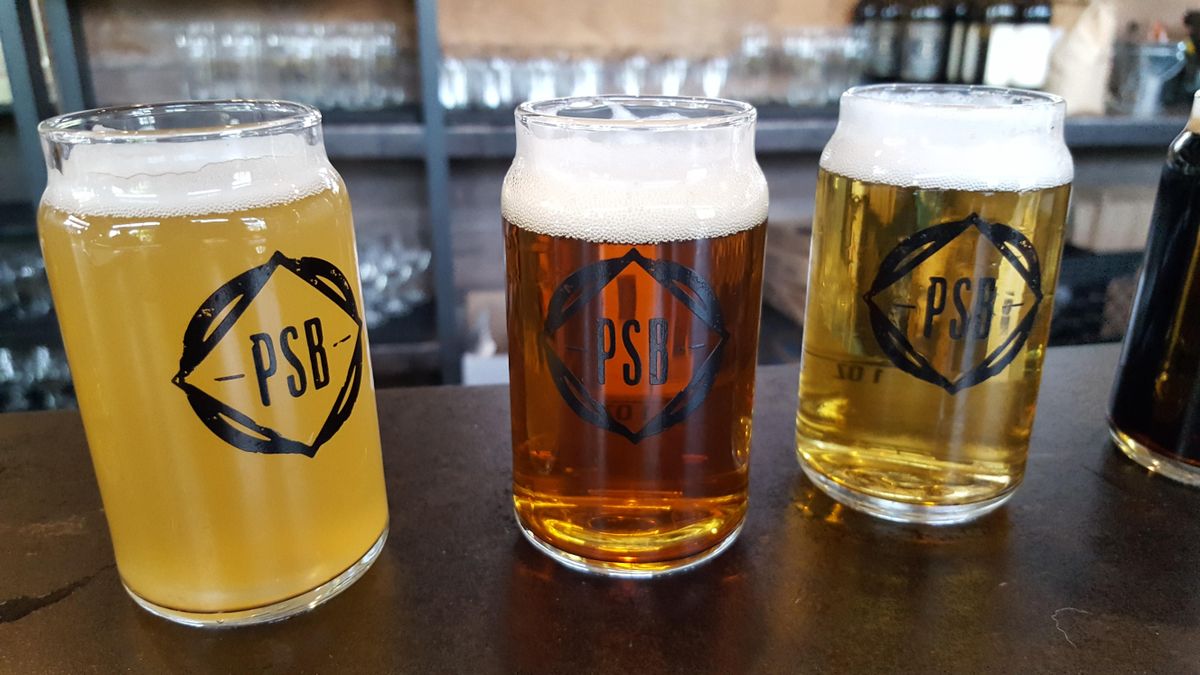Craft Beer Week: Spokane’s local breweries hit their stride

When Cameron Johnson opened Young Buck Brewing in an incubator space in downtown Spokane, he knew what he wanted to focus on: sour beers.
Traditional sour styles from Belgium often rely on letting wild yeast and bacteria strains into brews. In the modern day, brewers usually add selected bacterial strains during the brewing process, allowing them to ferment the malt. But though it’s popular in some places, sours have yet to come into their own in Spokane.
“A lot of people, you tell them you have a sour on and they just go blank,” Johnson said. But specialty beers sold in bottles – often barrel-aged brews that take time to ferment – are the fastest-growing segment of the craft beer market, he said.
Right now, he has a gose on tap. It’s a German style with sour and salty notes, and Johnson’s is balanced, without an overwhelmingly tart flavor. It’s the sort of beer you’d recommend to someone who wanted to see what the sour craze was all about.
“They’ve been well-received here in Spokane,” he said.
That brewers like Johnson are opening in Spokane is a testament to the region’s growing craft beer scene. The pace of new breweries opening is accelerating, and people are more willing to try less-common styles, Johnson said.
In honor of Spokane Craft Beer Week, we did our best to assemble a list of regular and currently-on-tap seasonal brews available at Spokane and Kootenai county breweries. The result is a database of more than 200 local brews from 24 breweries with tasting notes, styles and more. We’ve put it online at spokesman.com/apps/beerme.
Don’t be intimidated: If you’re new to beer, there’s a glossary of terms and a list of introductory beers we recommend to get you started exploring beyond the world of Budweiser or Rainier. If you’re a beer fan, you can make your own custom tap list based on the styles and flavors you like.
One thing is clear from a glance: Hops are still king in Spokane. More than one-quarter of the beers are India pale ales, more than any other style. (Stouts are second on the list.)
That’s not surprising: The Northwest is among the best hop-growing regions in the world, and accounts for 99 percent of the nation’s hop acreage. Hoppy beers have dominated the craft beer scene for years.
But brewers and beer aficionados in town say Spokane’s beer scene is growing up, and with that comes an interest in branching out.
Patrick McPherson bet on Spokane beer early when he opened Manito Tap House in 2011. He’d been homebrewing since 1999 and always enjoyed eating out at taphouses and pubs. Now, his South Hill establishment serves pub food with dozens of beers on tap, many local and some from around the world.
“There wasn’t any big beer in Spokane,” McPherson said.
Some of the region’s larger breweries, like No-Li and Iron Goat, were operating, but local beer was still new for many people.
“The timing was kind of right,” he said. He’s now opened The Blackbird, which has a smaller tap list more focused on local beers, which he said tourists often want to drink.
Ben Lukes, the owner and brewer at Perry Street Brewing, found a similar scene when he opened in 2014. He’d been working for Big Sky Brewing in Missoula and decided to move back to Spokane to open his own brewery.
“Coming from Montana, every city has like five to 10 breweries, and they’re all tiny cities,” he said. “I couldn’t believe that in this region of the world, where we have the best hops in the world, the best water … it just didn’t make any sense that it hadn’t exploded here yet.”
Just a few years later, the explosion has hit. Thirty-one breweries are licensed in Spokane and Kootenai counties, with a dozen new operations in the works. Longtime homebrewers like Johnson are opening up in the brewery incubator co-housed with the Steel Barrel Taproom and trying out new styles.
That’s good for innovation, though it’s likely to lead to some natural thinning over time. Many of today’s biggest craft breweries, like Deschutes, Sierra Nevada and New Belgium, began as small operations in the 1980s and 1990s, then grew as their beers became popular. Not every brewery survived.
“You’re going to see a weeding of the breweries,” McPherson said.
When Manito first opened, sour beers were an occasional addition to the tap list. McPherson once brought in a German gose, one of the best examples of the style in the world.
“We just couldn’t sell it. It took forever to blow the keg,” he said. Now, they keep two sours on tap and see a steady demand for them.
Lukes said he tries to brew a bit of something for everyone, though many of Perry Street’s beers are heavy on the hops.
“Most breweries, no matter what their IPA is, will probably be their No. 1 big seller,” he said. Amber ales are often popular among people just discovering craft beer because they’re relatively light and don’t have a ton of bitter or other flavors people aren’t used to.
Lukes said he sees the interest in craft beer as part of a larger movement where people want to eat local foods and know who’s growing and roasting their coffee.
“It seems like we’ve turned the corner and more people are seeking flavor and freshness and creativity,” Lukes said.